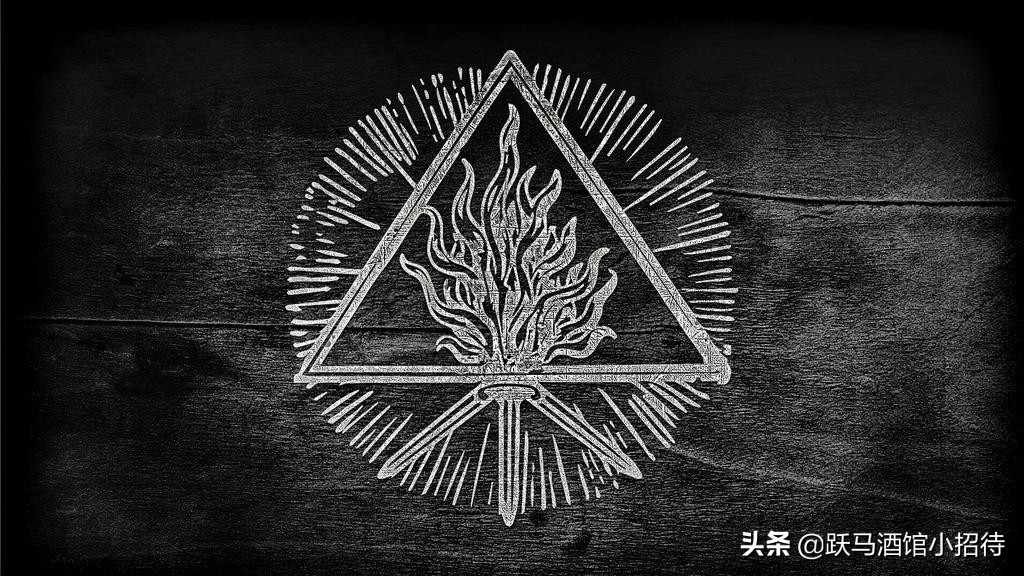Are you considering getting a tattoo that symbolizes strength, power, and leadership? A Constantine tattoo might be the perfect choice for you. This article will delve into the meaning of Constantine tattoos, providing you with all the information you need to make an informed decision about your next tattoo.

What is a Constantine Tattoo?
A Constantine tattoo is a type of tattoo design that features images, quotes, or symbols associated with Constantine the Great, a Roman emperor from the 4th century AD. Constantine is known for his military victories, religious conversion, and the founding of Constantinople, which later became the capital of the Byzantine Empire.
Constantine tattoos often incorporate images of the emperor himself, such as his likeness or name, as well as other symbols that represent his legacy, such as eagles, laurel wreaths, and crosses.

Constantine Tattoo Meaning: What is the Significance?
The meaning behind Constantine tattoos is multifaceted, combining elements of strength, power, leadership, and religious devotion. Here are some of the key meanings associated with Constantine tattoos:
Military Victory
Constantine was a prominent figure in the Roman Empire during the 4th century AD, who is often regarded as one of the most significant emperors in the history of Rome. He was a skilled military leader who led successful campaigns against various tribes and enemies, including the Goths and Sarmatians.
As such, Constantine tattoos have become increasingly popular due to their symbolic representation of strength, resilience, and the ability to overcome obstacles and enemies. These tattoos often depict images or symbols associated with military conquests, such as swords, shields, or eagles, which were common emblems of Roman military power.

In addition to their association with military prowess, Constantine tattoos can also represent endurance and steadfastness in the face of adversity. This is particularly relevant given Constantine’s role in Christianity, as he was responsible for legalizing and promoting the religion throughout the empire.
Religious Conversion
Constantine the Great was a Roman Emperor who ruled from 306 to 337 AD. He is widely known for his role in the spread of Christianity throughout the Roman Empire, which was a significant achievement during his reign. Constantine’s conversion to Christianity and the Edict of Milan, which he issued in 313 AD, were instrumental in the legalization of Christianity and the end of centuries of persecution against Christians.
The Edict of Milan, signed by Constantine and co-Emperor Licinius, granted freedom of worship to all religions, including Christianity, and allowed Christians to practice their faith publicly without fear of persecution. This decree marked a turning point in the history of Christianity and paved the way for the religion to become one of the dominant forces in Europe and beyond.

A tattoo of Constantine can hold deep significance for those who identify with this historical figure and his legacy. For many, it can symbolize religious devotion and serve as a reminder of the importance of faith in their lives. It can also represent a spiritual transformation, reflecting the idea that just as Constantine found his way to Christianity, others may also find their own path to enlightenment and inner peace.
Additionally, a Constantine tattoo can signify the triumph of faith over adversity. Constantine’s life was marked by struggle and conflict, both on the battlefield and in his personal life. Despite these challenges, he remained steadfast in his commitment to his beliefs and ultimately emerged victorious. This can be an inspiring message for those facing their own struggles, reminding them to stay true to their values and never give up hope.
Legacy and Leadership
A Constantine tattoo is a design that pays homage to the influential Roman Emperor, Constantine the Great. He is widely regarded as one of the most significant figures in Western history for his role in establishing Christianity as a dominant religion within the Roman Empire and his contributions to the political landscape.
Constantine’s reign was marked by many significant events, including the Battle of Milvian Bridge in 312 AD, which resulted in his victory over rival emperor Maxentius and paved the way for him to become the sole ruler of the Roman Empire. It was during this battle that he famously saw a vision of a Christian symbol, the Chi-Rho, and believed it to be a sign of divine intervention.
This event led to Constantine adopting Christianity as his favored religion and issuing the Edict of Milan in 313 AD, which granted religious tolerance and freedom throughout the empire. This decision had significant implications for the future of the Roman Empire and marked the beginning of a new era of Christian influence and political power.

Today, a Constantine tattoo can represent many things, but most notably, it can symbolize leadership, vision, and the ability to shape history. It is a reminder of the impact that one person can have on the world and the importance of standing up for what you believe in.
The design of a Constantine tattoo can vary greatly, but the most common elements include images of Constantine himself or symbols associated with his reign, such as the Chi-Rho or the image of a victorious emperor.
Mysticism and Occultism
Constantine, also known as Saint Constantine or Constantine the Great, was a Roman emperor who ruled from 306 to 337 AD. He is famous for his role in establishing Christianity as the dominant religion of the Roman Empire and for his military victories over rival emperors and foreign enemies.
In popular culture, Constantine has been portrayed as a character dealing with supernatural and occult phenomena, particularly in the comic book series “Hellblazer” and its adaptat

A tattoo of Constantine could symbolize an interest in mysticism, magic, and the exploration of hidden realms. It could represent a fascination with the supernatural and a desire to understand the unseen forces that shape our world. It might also suggest a willingness to challenge conventional beliefs and to explore alternative perspectives on reality.
Alternatively, a Constantine tattoo could be seen as a homage to the historical figure and his legacy as a Christian leader and Roman emperor. It could be a way to express one’s admiration for his achievements and his role in shaping the course of Western civilization.
Complex Morality
The character of Constantine, as portrayed in various media, is often depicted as morally ambiguous. He is a master of deception and manipulation, willing to do whatever it takes to achieve his goals. While he may have good intentions at times, his methods are often questionable, and he frequently crosses ethical boundaries.
A tattoo can be a powerful symbol of an individual’s beliefs and values. In the case of Constantine, a tattoo could reflect his understanding of the complexities of morality and the shades of gray in ethical decisions. It could represent his acknowledgement that there are no clear-cut answers when it comes to right and wrong, and that sometimes the lines between the two can be blurred.

The image or design of the tattoo could also convey nuanced meanings that relate to Constantine’s character. For example, a tattoo of a snake could represent his cunning and ability to manipulate others, while a skull could symbolize his willingness to confront death and danger.
Personal Struggles
Constantine, like many people, often faces personal demons and internal struggles that can be challenging to overcome. These struggles may manifest in different forms, such as negative self-talk, anxiety, depression, addiction, or trauma.
For some individuals, getting a tattoo can be a way of expressing their innermost thoughts and emotions, including those related to mental health and personal challenges. Tattoos can act as a form of self-expression and a visual representation of one’s journey and experiences.

A tattoo can also be a symbol of an individual’s own battles with inner turmoil, mental health, or personal challenges. For example, a person who has struggled with addiction might get a tattoo to remind themselves of the progress they have made in their recovery. Or, someone who has experienced trauma might choose a tattoo design that represents healing, resilience, or transformation.
Moreover, tattoos can serve as reminders of the strength and resilience that individuals possess as they tackle their personal demons. By choosing to permanently ink a symbol onto their skin, people can feel empowered and motivated to continue fighting their personal battles.
The Design of Constantine Tattoos
Constantine tattoos can take many different forms, depending on the wearer’s preferences and the artist’s creativity. Here are some popular design options for Constantine tattoos:
Portrait Tattoos
Portrait tattoos feature an image of Constantine’s face or bust, often with intricate details and shading to capture his likeness. These tattoos can be large or small, black and white or color, and placed anywhere on the body.

Quote Tattoos
Quote tattoos feature a memorable phrase or saying attributed to Constantine, such as “In hoc signo vinces” (“In this sign, you will conquer”), which he reportedly saw in a vision before his victory at the Battle of the Milvian Bridge. These tattoos can be scripted in any font and placed on any part of the body.

Symbol Tattoos
Symbol tattoos feature images associated with Constantine’s legacy, such as eagles, laurel wreaths, and crosses. These tattoos can be simple or complex, incorporating other elements like banners, shields, or swords.
Conclusion: Constantine Tattoo Meaning
A Constantine tattoo is a powerful and meaningful way to express your values, beliefs, and personal style. Whether you’re drawn to the history and legacy of Constantine the Great, or simply appreciate the symbolism behind this iconic figure, a Constantine tattoo can be a truly inspiring addition to your body art collection.
Remember to do your research, work with a reputable artist, and choose a design that speaks to your heart and soul. With the right approach, a Constantine tattoo can be a lifelong source of inspiration and pride.

I am Harvey Berry, a tattoo enthusiast who has immersed himself in the diverse world of ink, passionately exploring the beauty and artistry within each tattoo. My mission extends beyond uncovering the aesthetics of tattooing; it involves sharing in-depth knowledge across all aspects of this art form.
Fueled by genuine curiosity and love for every facet of tattooing, I have diligently crafted well-researched articles, with a special focus on the Tattoo Meaning of Impeccable Nest section. Here, my aim is to help the tattoo community gain a deeper understanding of the meanings and values embedded in each tattoo.
One of my primary goals is to encourage responsible decision-making when it comes to getting inked. I recognize that choosing to get a tattoo is a significant personal decision that requires careful consideration. Hence, I provide diverse resources covering the meaning of tattoos, the tattooing process, aftercare tips, and other valuable information.
Whether you are a seasoned tattoo enthusiast or embarking on your first exploration of the world of body art, I aspire to be a reliable resource for you at every step of your journey. I hope that my extensive knowledge of tattoos, especially in the Tattoo Meaning section, will assist you in finding inspiration to express yourself through the art of tattoos.
